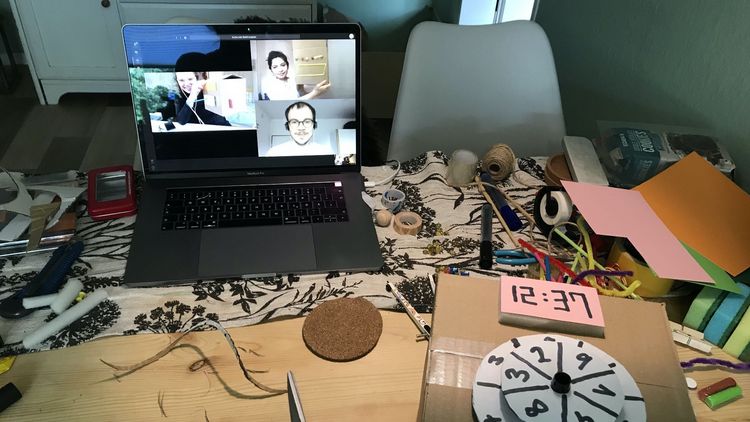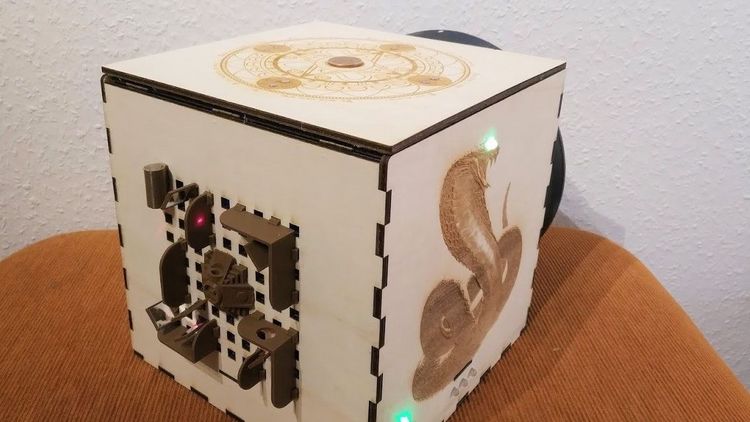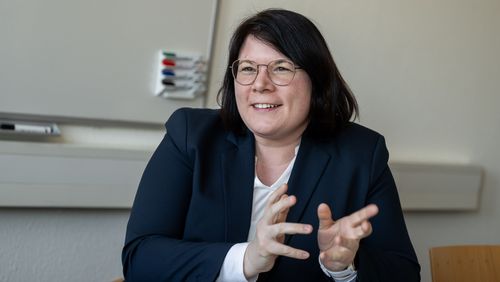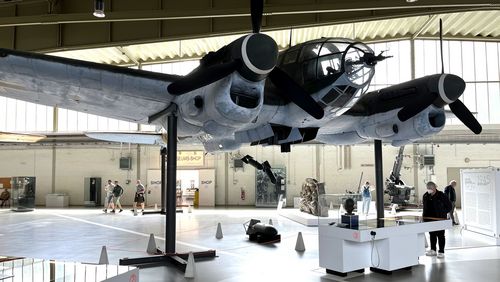Holding practical modules in the pandemic poses a major challenge for lecturers. For the "Maker's Lab", a practical hardware-oriented course in the Computer Science Master's degree programme, Susanne Boll and her team came up with a special solution.
In a normal semester, the Maker's Lab is a lively course: this module in the Computer Science and Engineering of Socio-Technical Systems Master's degree programmes is all about trying things out and tinkering with them. The students are tasked with designing and developing an interactive system, for example a robot vehicle with sensors which can be controlled via a keyboard.
In the biweekly sessions, participants first create prototypes made out of cardboard, glue and other everyday materials, then they try out different versions, build proper components made of wood or metal, connect the electronic components, and present a functioning system at the end of the course. In close consultation with their tutors, the students learn how to develop a product step by step: "They start with an assignment and refine their design on the basis of feedback they receive from us lecturers and also from potential users, usually friends or acquaintances," reports Professor Susanne Boll, a lecturer in media informatics at the University of Oldenburg.
In this way the students learn a number of rapid prototyping techniques, or in other words techniques for fabricating a prototype of a product using simple methods. They also learn that when it comes to designing hardware, not only the requirements of manufacturing but also the needs of the users play a key role.
Working together without meeting
This teaching format proved very effective – until everything changed in the summer semester of 2020. The coronavirus pandemic meant that the course could no longer take place at the university, which posed a problem for Boll and her colleagues, Tobias Lunte and Dr Heiko Müller. "We have a fully equipped workshop on campus, our FabLab, with high-tech tools such as 3D printers, laser cutters and 3D scanners," the computer scientist explains. How would the 15 students on the course be able to complete their project without these resources? And how could they continue to work in groups of two or three without meeting in person?
The team decided that instead of offering several assignment options, as in previous years, it would set the same task for all the students: design an interactive puzzle box made of wood that opens via a digitally controlled mechanism. Each of the four sides of the box were to feature puzzles based on a common theme and involving sensors, controls, switches and actuators. The box was to be designed so that once the puzzles on all four sides had been solved, a mechanism would open it and reveal a "treasure" inside.
"In this way the assignment could be split up into several smaller problems that the students could work on individually," explains Boll. Each student received a box containing various materials with which to develop the prototype. Students living in Oldenburg could pick up the box at the university, while those living elsewhere received it by post. The kits contained an assortment of materials such as clothes pegs, straws, tacks, household sponges, construction paper and modelling clay, from which the students then constructed the first simple models of their puzzle boxes according to the "quick and dirty" principle.
A Maker's Space at home
Three weeks later, once the students had worked out and refined their concepts, they received a second package containing the electronic components, including a plug-in board, light-emitting diodes, sensors and actuators, resistors and lots of different cables. The key component for operating the entire system was a microcontroller – a small computer chip with a processor commonly found in everyday gadgets such as washing machines, timers or remote-controlled toys. If the students needed laboratory technologies such as 3D printing or laser cutting for the production process, they could ask the lab staff to make these components for them.
Boll and her colleagues supervised and guided the students via regular video conferences in which the teams presented pictures, audio presentations and videos of their prototypes. In addition, the teams also used their own chat groups and video channels to exchange ideas. "This course requires a high level of interaction – even in an online semester," Boll stresses.
The computer scientist was thrilled with the results: "The students developed extraordinarily sophisticated, creative and fully functional puzzle boxes." Together with her colleagues, Boll presented the teaching concept in the December issue of the IEEE Pervasive Computing Magazine. The scientists were particularly impressed with their students' creativity: one group designed puzzles based on various alphabets, another constructed a kind of safe and chose the conquest of the Aztec empire by the Spanish conquistador Hernán Cortés as its theme. In another team's project, coins and an electronic musical instrument called the theremin played a key role in cracking the puzzle box.
Excellent results
Assembling the boxes proved to be the biggest challenge for the students. Cables were too short, components were glued together in the wrong place, or they would end up with a big tangle of cables inside the puzzle box. "In a normal semester the students would undoubtedly have noticed all these problems earlier on," says Boll. In the end, she says, it became clear that the excellent results were also due to the fact that the students had put far more work into their projects than in previous semesters. "In future remote courses, we must pay more attention to clearly communicating our expectations, so that the amount of work for the students remains manageable."
In a survey, the participants said they were able to familiarize themselves with the new techniques even if they had had no previous experience of working with prototyping and electronics. Although some said they felt somewhat restricted by the situation, for example the lack of access to a lab, or the fact that there was less of a joint development process, many enjoyed the flexibility and freedom of the format and found it particularly productive. Boll says that for her this new way of teaching was definitely a positive experience: "In the end, most of the students were very satisfied with the concept and the organization of the course."





